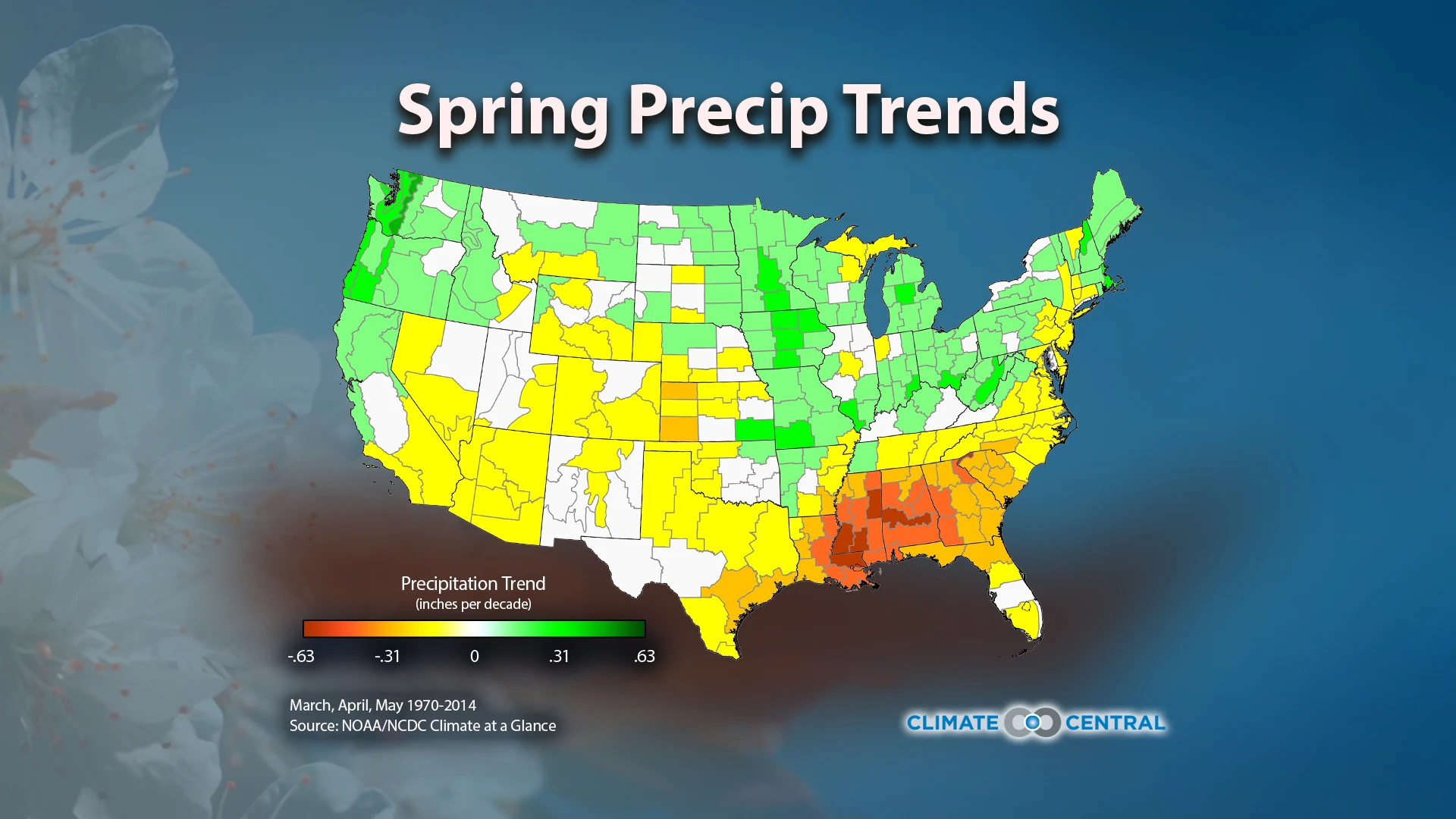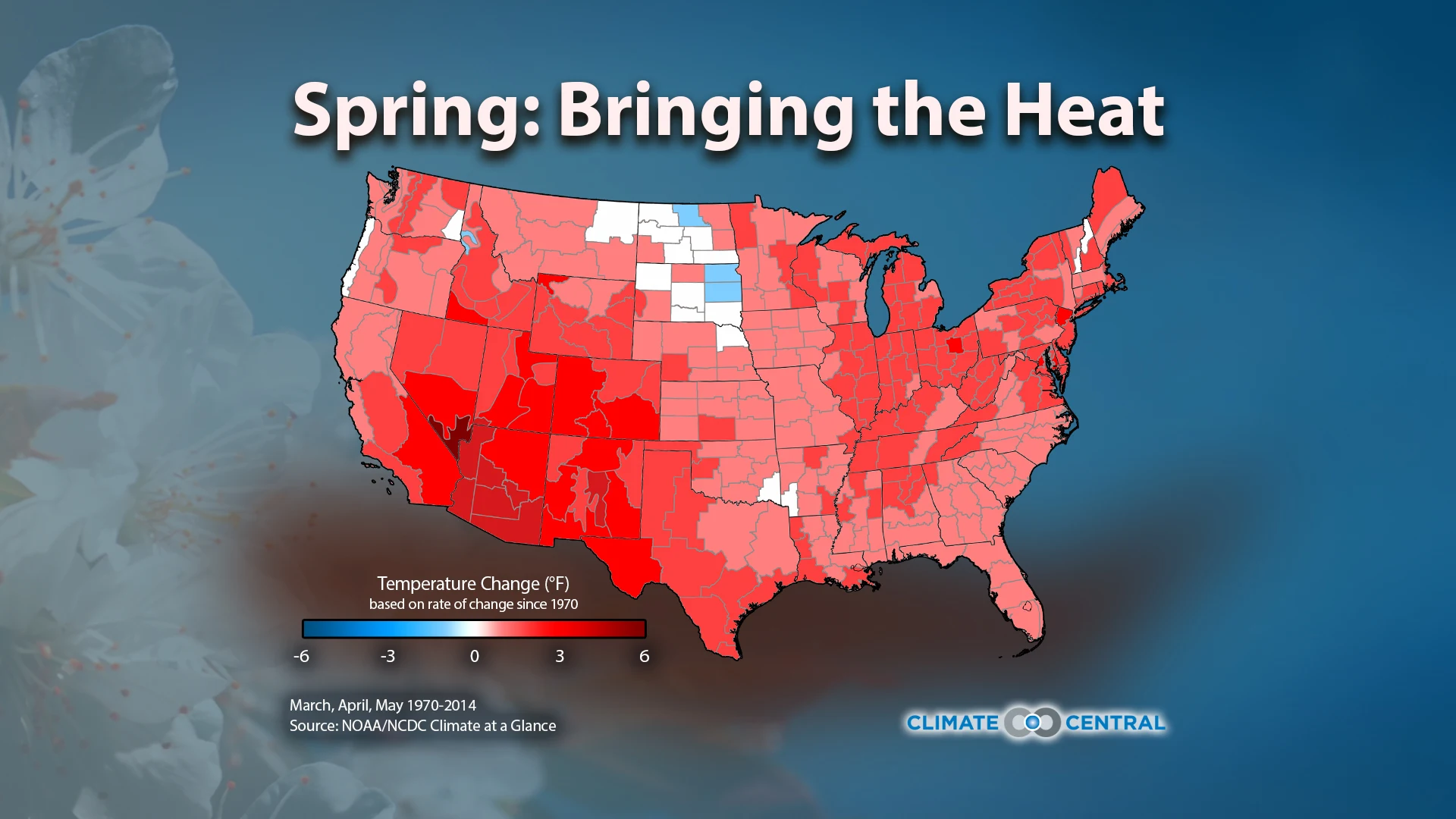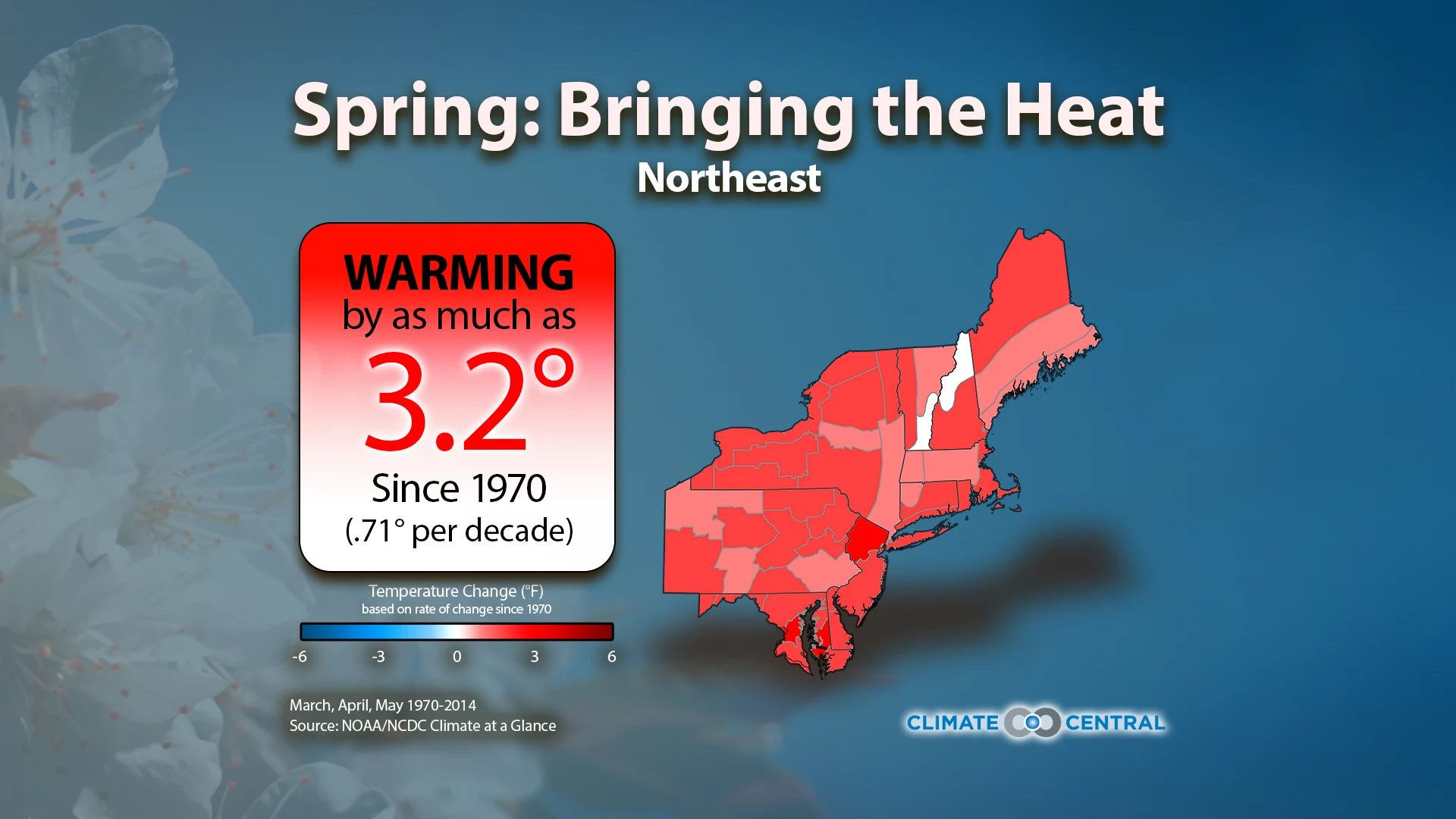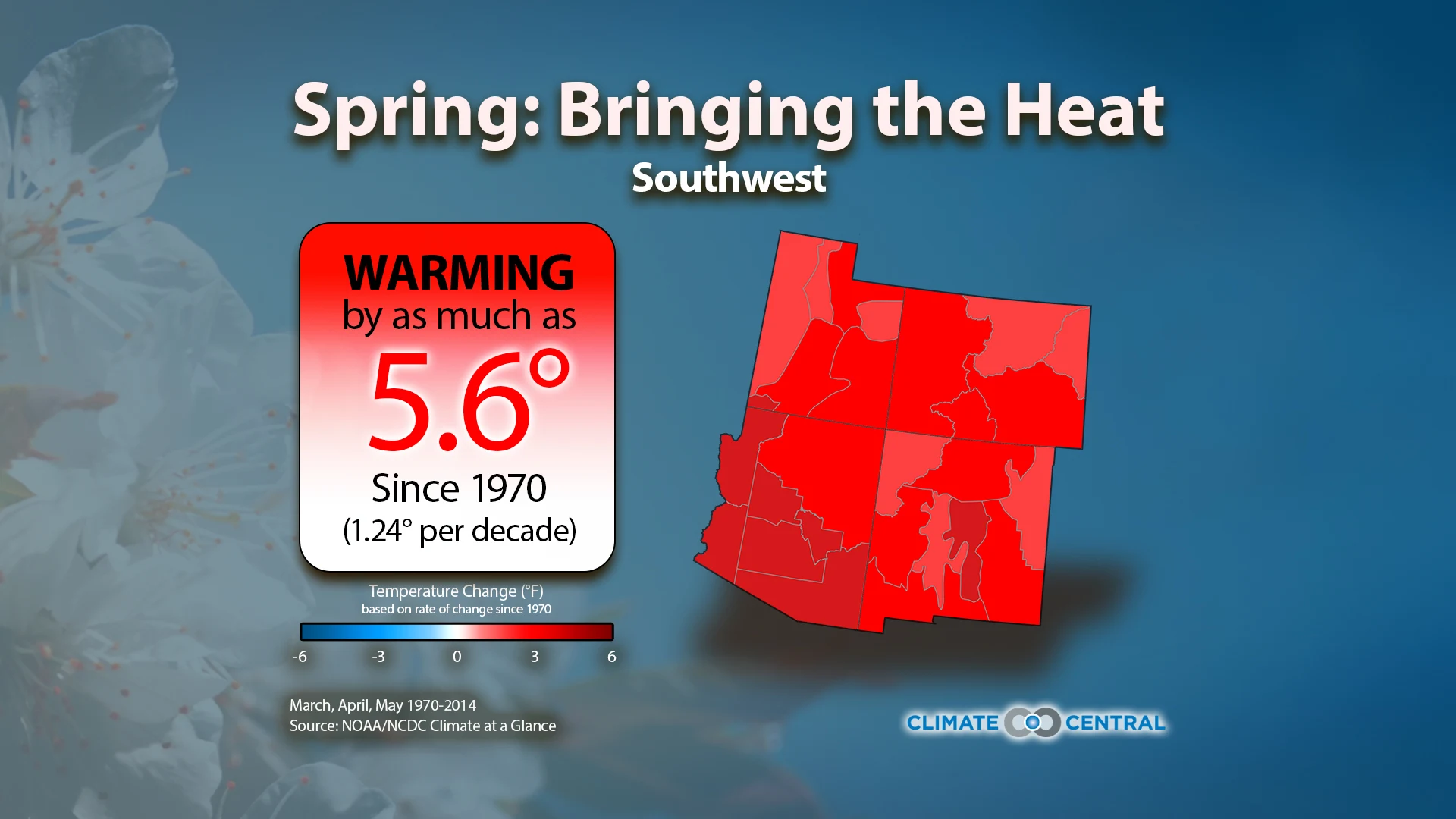



Last week’s snow and ice from Texas to the Mid-Atlantic, along with a blast of single-digit lows across the Midwest and Northeast, make it hard to believe that meteorological spring is underway. Meanwhile, the West might feel like winter never came. But classic spring weather is officially around the corner.
Spring has been getting steadily warmer almost everywhere. Nationwide, temperatures have climbed an average of 1.9°F since 1970 (0.42°F per decade). The greatest warming has been observed in southern Nevada, which falls in the West region, up as much as 6° since 1970. The Southwest region has also experienced significant warming, up as much as 5.6° since 1970.
Warming is not uniform. Temperatures have stayed nearly steady in a few places — parts of Montana, Oklahoma, Arkansas, New Hampshire, Vermont, Washington, Oregon, and the Dakotas. Small sections of North and South Dakota, along with a tiny sliver of Idaho, have gotten cooler, decreasing by as much as 0.42° since 1970. But even with those few cooling spots, every climate region (as defined by NOAA) has warmed.
These local and regional differences illustrate a basic fact of climate science. Even as the world warms overall, some places will warm less than others.
When it comes to precipitation, the story is not as obvious. A warmer atmosphere can hold more water vapor, which means there’s more to come down in rainstorms. That’s consistent with the fact that heavy downpours have been on the rise in every region of the lower 48 since the late 1950s.
Average precipitation during meteorological spring hasn't changed much since 1970. The contiguous states have seen a scant 0.03 inches less precipitation per decade — hardly a significant trend.
Regional patterns, however, tell a different story. In the Southeast, the decline in precipitation has been as much as a half an inch per decade. By contrast, there’s been more rain in the Pacific Northwest, especially in the western parts of Washington and Oregon, where some climate divisions have increased as much as 0.33 inches per decade.
